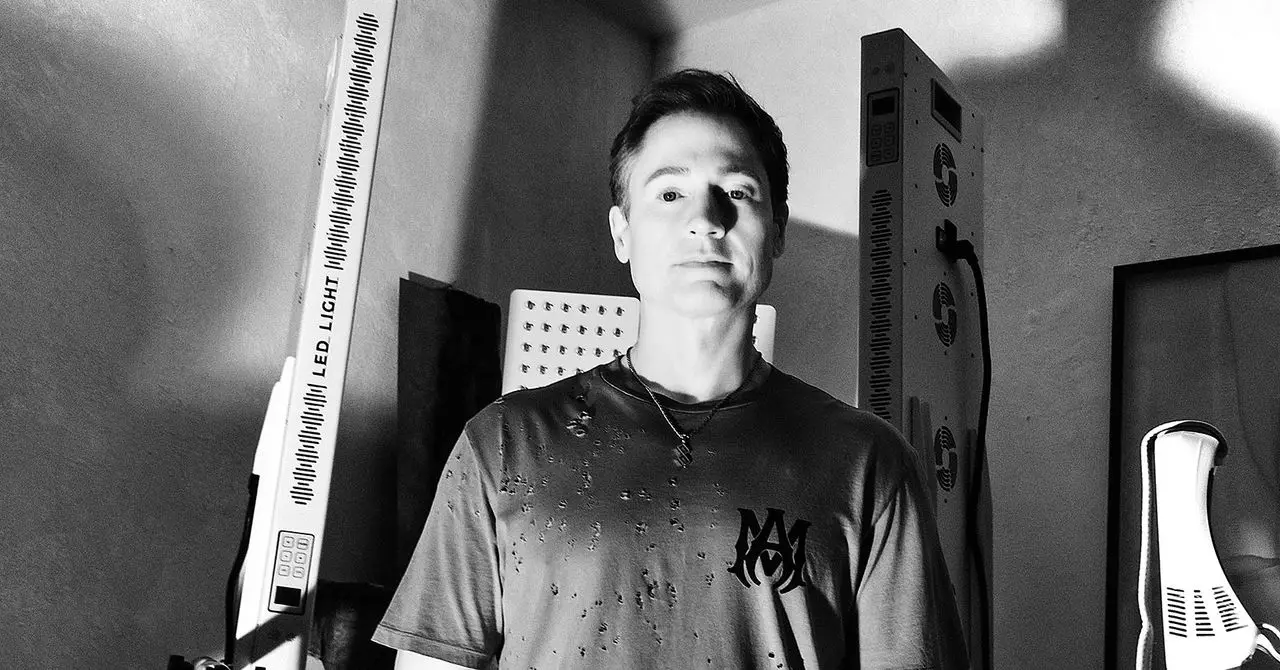In an era where life expectancy is continually rising thanks to technological and medical advancements, the allure of living forever remains tantalizingly close yet profoundly elusive. Take Bryan Johnson, a Silicon Valley entrepreneur whose obsession with longevity exemplifies our collective craving for eternal youth. His pristine kitchen, meticulously organized with precision-cut fruits and a battalion of health supplements, appears as a modern temple dedicated to the flawless human body. But beneath this surface lies a stark reality: the symbols of health and vitality can be deceiving. The rotting fruit on Johnson’s countertop serves as a metaphor for the dissonance between outward appearances and underlying truths. Johnson’s life, glittering with wealth and influence, is often portrayed as an all-encompassing pursuit to reverse age—an ode to imperfection masked by futuristic rituals. His obsession with eradicating aging raises profound questions about the human condition: are we truly capable of defeating time, or are we merely deluding ourselves into believing that perfection is attainable?
The narrative of Johnson’s quest for eternal youth is more than just a personal endeavor; it symbolizes society’s larger obsession with self-optimization. The constant pursuit of the “best” body, mind, and life is driven by a culture that equates worth with youth and vitality. Yet, as Johnson’s home suggests, this pursuit is also riddled with contradictions. The sterile environment, filled with blood vials and specimen cups, strips away the warmth of daily life, turning human existence into a series of performance metrics. It highlights a troubling reality: our fixation on precision and perfection often distances us from the organic, unpredictable nature of being human. The real challenge lies not in the physical façade, but in accepting the natural ebb and flow of life’s impermanence.
The Illusion of Control and Ethical Dilemmas
Johnson’s rigorous regimen—complete with invasive blood tests, plasma transfusions, and relentless monitoring—embodies a stark desire for control over aging. It’s provocative to consider whether such measures are truly about health or a deeper need to assert mastery over mortality itself. This obsession raises ethical questions: how far should we go in our quest for longevity? Will the pursuit of extended lifespans create a class divide where only the wealthy can afford the luxury of “anti-aging” science? The implications extend beyond individual health to societal fairness and the morality of manipulating human biology.
Moreover, Johnson’s aggressive enforcement of confidentiality agreements exemplifies a broader tendency in the tech world to privatize knowledge—keeping groundbreaking techniques and data secret to maintain advantage and control. This secrecy complicates public discourse around the risks and benefits of such radical interventions. The promise of living longer is intoxicating, yet it is often accompanied by unseen costs—psychological, social, and ethical. Is sacrificing transparency and potentially the diversity of scientific progress justified if it ensures personal or corporate gain? This tension underscores a fundamental flaw in humanity’s relentless pursuit of immortality: the trade-off between openness and exclusivity.
The Cultural Impact of the Longevity Movement
Johnson’s story is emblematic of a broader cultural shift where individual health becomes a form of identity and status. His extensive online presence, sharing content about sleep routines and biological optimization, turns the science of aging into a spectacle. It blurs the line between personal health and performance art, making the quest for longevity not just a private journey but a public performance. This spectacle fosters a new kind of hero—one who defies age publicly, inspiring followers to emulate a lifestyle rooted in meticulous control and relentless improvement.
However, this trend raises concerns about whether such extreme measures are sustainable or even desirable. The glorification of youth and health can perpetuate unrealistic standards that discourage acceptance of natural aging processes. It also risks equating self-worth with biological perfection, ignoring the invaluable lessons of aging—wisdom, resilience, and acceptance. While Johnson’s efforts may be laudable to some, they also serve as a mirror reflecting society’s obsession with denial and the denial of death itself.
The narrative surrounding longevity is shifting from a fringe scientific ambition to a mainstream cultural phenomenon, propelled by social media and entrepreneurial zeal. Yet, amidst the high-tech gadgets and biohacks, a fundamental question persists: is eternal life a noble pursuit, or an ultimately futile quest that distracts us from embracing the transient beauty of our human experience? Johnson’s story, with its stark contradictions and intense focus on control, invites us to reconsider our collective obsession with defying mortality and to ponder whether true fulfillment lies not in extending life at all costs but in cultivating meaning within it.


Leave a Reply